Essential Home Security Tips for Millennials
In today’s fast-paced world, home security is a topic that often gets overlooked, especially among millennials who are busy juggling careers, social lives, and personal projects. But let’s be honest: your home is your sanctuary, and ensuring its safety should be a priority. With the rise of technology and smart home devices, securing your living space has never been easier—or more essential. This article explores crucial home security strategies tailored specifically for millennials, emphasizing practical solutions that enhance safety while fitting modern lifestyles and budgets. Are you ready to transform your home into a fortress of safety without breaking the bank? Let’s dive in!
Recognizing the unique security challenges faced by millennials is essential. Many young adults are renting apartments or living in shared spaces, which can present distinct vulnerabilities. For instance, poorly lit entryways, easily accessible windows, and a lack of personal control over security systems can make homes more susceptible to break-ins. Moreover, lifestyle choices—like frequent travel for work or leisure—can leave homes unoccupied for extended periods, creating ripe opportunities for intruders. Understanding these factors is crucial in developing a security strategy that fits your lifestyle. Are you aware of the specific risks associated with your living situation? Identifying them is the first step toward a more secure home.
Integrating smart home devices can significantly enhance security, making it a popular choice among tech-savvy millennials. Imagine being able to monitor your home from anywhere in the world with just a few taps on your smartphone. Popular technologies like smart locks, cameras, and alarms not only offer convenience but also provide peace of mind. With these tools at your disposal, you can keep an eye on your property, receive alerts about suspicious activity, and control access to your home, all from the palm of your hand. Isn’t it comforting to know that you can keep your home secure, even when you’re miles away?
Smart locks are a game-changer in home security. Unlike traditional locks, they offer a multitude of features that cater to the busy lifestyles of millennials. For instance, you can grant access to friends or family without needing to be home, and you can even set temporary codes for service personnel. Imagine being able to let in a delivery person while you’re at work, all without having to rush back home! Additionally, many smart locks come with built-in alarms that alert you to unauthorized access attempts, adding an extra layer of security. With the convenience of keyless entry, you’ll never have to fumble for your keys again—just a simple tap on your phone or a quick code entry will do the trick!
With smart locks, users can remotely control access to their homes, which is incredibly beneficial in emergencies. Have you ever found yourself wondering if you locked the door after leaving? With remote access, you can check the status of your locks instantly and lock or unlock them from anywhere. This feature not only enhances your peace of mind but also allows you to respond quickly to potential security threats. Imagine being on vacation and receiving an alert that someone is trying to enter your home—wouldn’t it be great to lock them out with just a click?
One of the most exciting aspects of smart locks is their ability to integrate with other smart devices. This connectivity creates a comprehensive security system that works together seamlessly. For example, when your smart lock detects that you’re away, it can trigger your smart lights to turn on, giving the illusion that someone is home. Similarly, if your security camera detects movement at the front door, it can send an alert to your phone while also locking the door. This level of integration not only enhances security but also simplifies your daily routine. Are you ready to embrace a smarter way to protect your home?
Home security cameras are vital for monitoring and deterring intruders. They come in various types, from doorbell cameras that let you see who’s at your door to indoor cameras that monitor activity inside your home. The effectiveness of these cameras in securing homes cannot be overstated; they provide real-time footage and can even alert you to any unusual activity. Plus, many modern cameras offer two-way audio, allowing you to communicate with visitors or potential intruders directly. Isn’t it reassuring to know that you can keep an eye on your home, no matter where you are?
A well-thought-out security plan is crucial for any homeowner, especially millennials who may not have considered all the angles. The first step in creating a security plan is assessing your vulnerabilities. This means taking a hard look at your living space and identifying areas that could be improved. Are there dark corners around your property? Is your door easily accessible? By understanding your home’s weak points, you can take proactive measures to address them. Don’t wait until it’s too late—start planning today!
Understanding your home's weak points is the first step in creating a security plan. Walk around your property and take note of any areas that could be easily accessed by intruders. Consider the following:
- Are your doors and windows secure?
- Is there adequate outdoor lighting?
- Are there any hidden spots that could provide cover for intruders?
By identifying these vulnerabilities, you can implement effective measures, such as installing better locks, adding motion sensor lights, or even landscaping to eliminate hiding spots.
Having clear emergency protocols can save lives. It’s essential to plan for various scenarios—whether it’s a break-in, fire, or natural disaster. Ensure that all household members are informed about these protocols and know what to do in case of an emergency. Regularly review these plans and conduct drills to keep everyone prepared. Remember, when it comes to safety, being proactive is always better than being reactive!
Q: What is the best way to secure my apartment?
A: Start by assessing your vulnerabilities, then invest in smart locks and security cameras. Ensure all doors and windows are secure and consider a comprehensive security system.
Q: Are smart home devices worth the investment?
A: Absolutely! Smart devices offer enhanced security features, convenience, and peace of mind, making them a worthwhile investment for any homeowner.
Q: How often should I review my home security plan?
A: It’s a good idea to review your security plan at least once a year or whenever there are significant changes in your living situation.
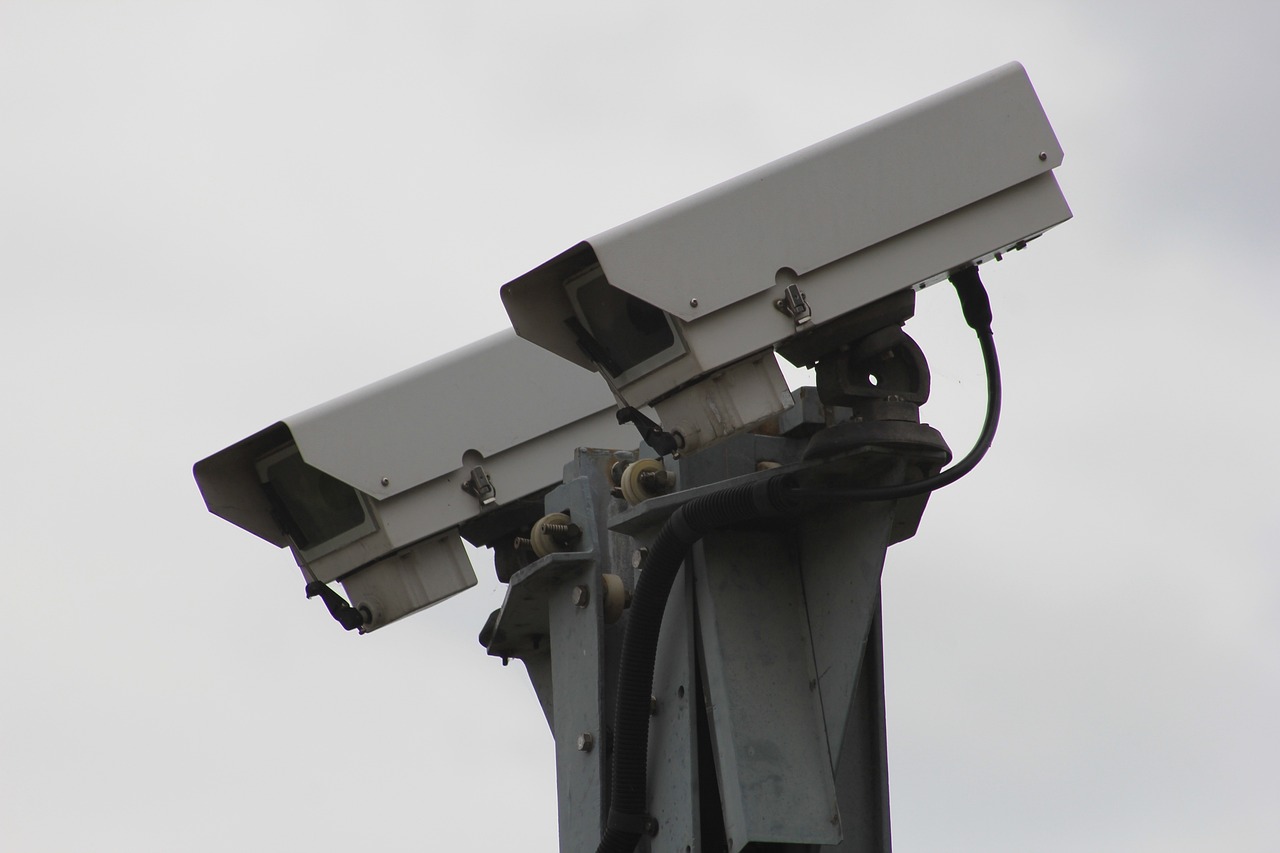
Understanding Home Security Needs
In today’s fast-paced world, understanding your home security needs is more crucial than ever, especially for millennials who often juggle multiple responsibilities. Many young adults are moving into new neighborhoods, some might be renting, while others are buying their first homes. Each of these situations presents unique security challenges that can leave them feeling vulnerable. So, what are the common vulnerabilities that millennials face? Let's dive in!
First off, it’s important to recognize that millennials often prioritize convenience and affordability. This means they might overlook traditional security measures in favor of more modern, tech-savvy solutions. However, this can sometimes lead to gaps in security. For instance, many younger individuals rely heavily on their smartphones for everything—from banking to communication—yet they may not apply the same level of scrutiny to their home security. This reliance on technology can be a double-edged sword. On one hand, it offers innovative solutions; on the other, it can expose them to cyber threats if not managed properly.
Moreover, the transient nature of millennial lifestyles can also impact their security needs. Frequent moves for jobs or personal reasons often mean they don’t invest in long-term security solutions. A rental property might not allow for extensive security upgrades, leaving them with limited options. This can create a false sense of security, as many assume that simply living in a well-lit neighborhood or having a friendly neighbor is enough to deter potential threats. However, it’s essential to take a proactive approach.
Here are some common vulnerabilities that millennials should be aware of:
- Weak Locks: Many rental properties come with outdated or cheap locks that are easy to pick.
- Limited Awareness: New homeowners or renters might not know the crime rates in their area, making them unaware of potential risks.
- Lack of Security Systems: Many young adults might shy away from traditional security systems due to cost, opting instead for DIY solutions that may not be as effective.
- Social Media Oversharing: Posting about vacations or new purchases online can inadvertently signal to burglars that a home is unoccupied.
Understanding these vulnerabilities is just the first step. It’s essential to adapt security measures to fit your lifestyle. For instance, if you're renting, consider investing in portable security devices like smart cameras or alarms that can be easily moved. If you're a new homeowner, take the time to assess your property and implement a comprehensive security plan. Remember, the goal is not just to protect your belongings but also to ensure your peace of mind.
Ultimately, recognizing how lifestyle choices impact security requirements can empower millennials to take control of their home safety. By understanding these challenges and actively seeking solutions, they can create a secure living environment that aligns with their modern lifestyles.
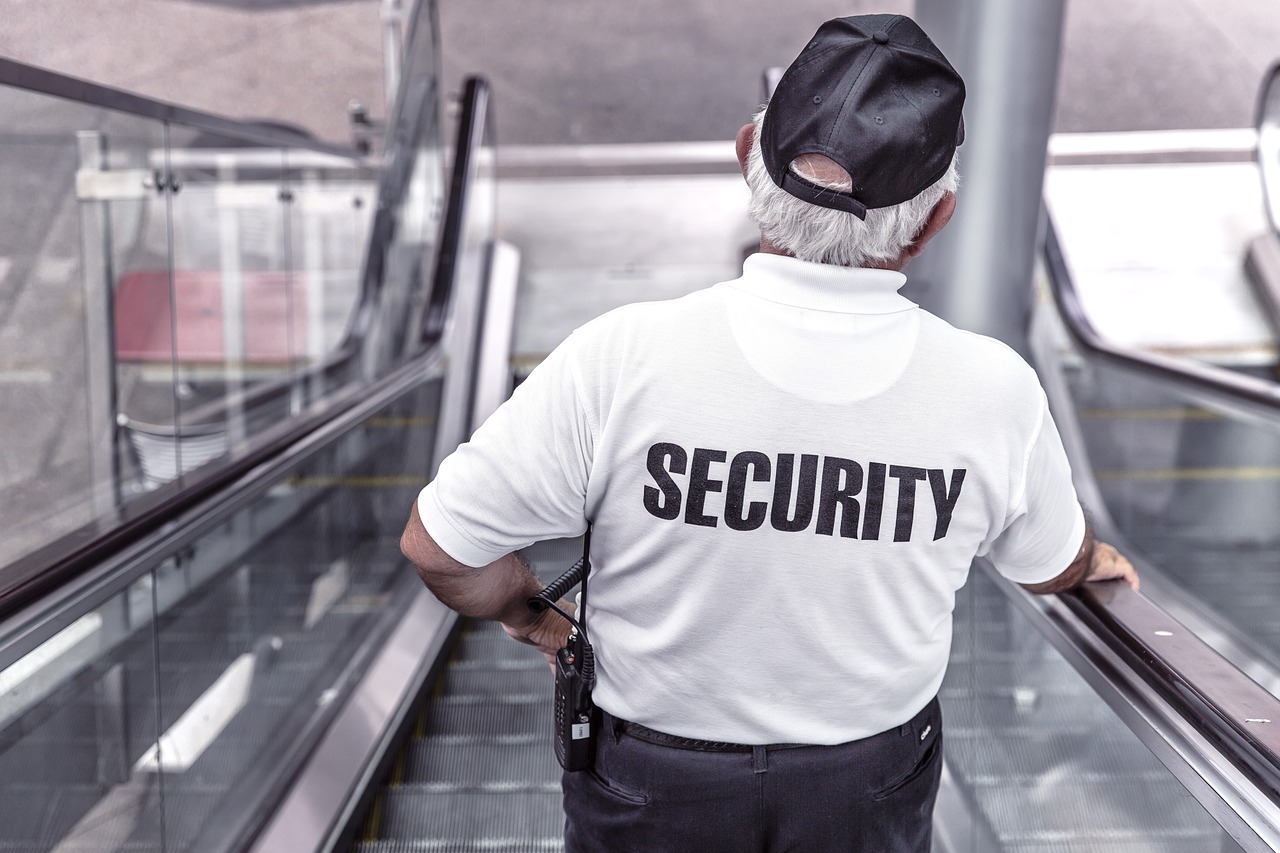
Smart Home Technology
In today's fast-paced world, is not just a luxury; it's becoming an essential part of modern living, especially for millennials who value both convenience and security. Integrating smart devices into your home can significantly enhance your safety while fitting seamlessly into your lifestyle. Imagine being able to lock your door or monitor your home from anywhere in the world—this is the power of smart technology!
Millennials often lead busy lives, juggling work, social commitments, and personal projects. With this in mind, smart home devices offer innovative solutions that cater to their needs. For instance, smart locks, security cameras, and alarm systems can all be controlled from a single app on your smartphone. This integration not only provides peace of mind but also ensures that safety is just a tap away.
Let’s dive deeper into one of the most popular smart home devices: smart locks. These locks are revolutionizing home security by offering features that traditional locks simply can't match. Imagine being able to grant access to a friend or family member without having to be home. Smart locks allow you to create temporary access codes for guests, making it easy to manage who comes and goes. Plus, many models come with built-in alarms that alert you to any suspicious activity.
One of the standout features of smart locks is their ability to provide remote access. You can lock or unlock your door from anywhere, whether you're at work or on vacation. This means no more worrying if you forgot to secure your home before leaving. Additionally, many smart locks offer monitoring capabilities, so you can see exactly when someone enters or exits your home. This level of control is invaluable for busy millennials who want to keep tabs on their living space without being physically present.
Smart locks are not just standalone devices; they can be integrated with other smart home technologies to create a comprehensive security system. For example, when paired with smart cameras, you can receive alerts on your phone if someone tries to access your home. This interconnectedness allows for a more robust security framework that can adapt to your lifestyle. Imagine receiving a notification that someone is at your door, then being able to view live footage from your smart camera—all while sitting on your couch!
When it comes to securing your home, home security cameras are an essential component. They not only act as a deterrent to potential intruders but also provide valuable evidence in case of an incident. There are various types of cameras available, from indoor models that monitor activity inside your home to outdoor cameras that keep an eye on your property’s perimeter. Many of these cameras come equipped with features like night vision, motion detection, and two-way audio, which can enhance your overall security strategy.
In conclusion, embracing smart home technology can vastly improve your home security while aligning with your modern lifestyle. Whether it's through smart locks or security cameras, these devices offer practical solutions that are not only effective but also convenient. So, why not take that leap into the future and secure your home with the latest technology?
- What is a smart lock? A smart lock is a keyless locking mechanism that can be controlled remotely through a smartphone app, allowing users to lock or unlock their doors from anywhere.
- Are smart locks safe? Yes, smart locks are designed with advanced security features, including encryption and alerts for unauthorized access, making them a safe option for home security.
- Can I integrate my smart lock with other devices? Absolutely! Most smart locks can be integrated with other smart home devices, such as security cameras and alarm systems, to create a comprehensive security network.
- How do I install a smart camera? Installation varies by model, but most smart cameras come with easy-to-follow instructions and can be set up within minutes using a smartphone app.
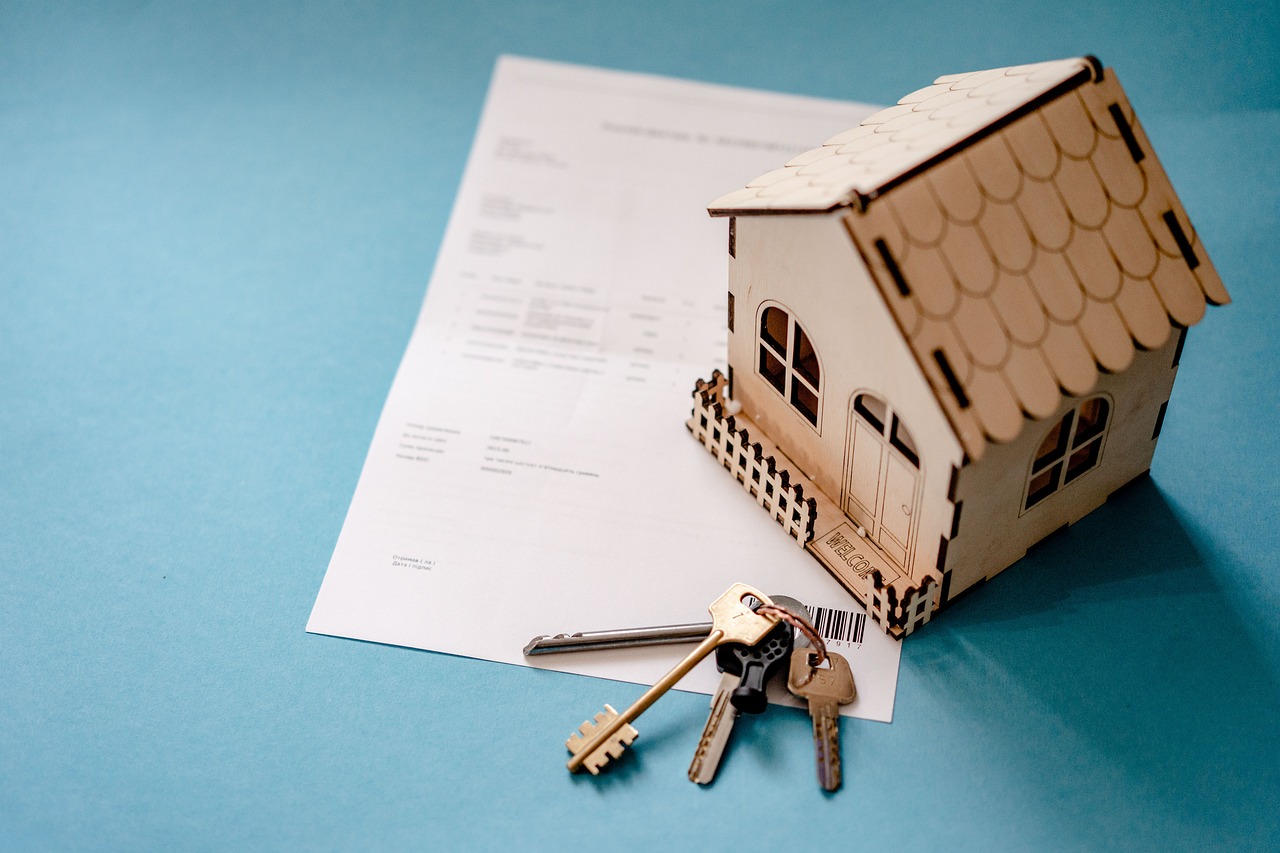
Benefits of Smart Locks
Smart locks are revolutionizing the way we think about home security, especially for millennials who are always on the go. Unlike traditional locks, which require physical keys, smart locks offer a range of convenience and security features that perfectly align with modern lifestyles. Imagine never having to fumble for your keys again or worrying about losing them! With smart locks, you can unlock your door using your smartphone, a keypad, or even your voice, depending on the model you choose. This not only makes life easier but also enhances your home’s security.
One of the standout features of smart locks is their ability to provide remote access. This means you can lock or unlock your door from virtually anywhere, whether you're at work, on vacation, or just hanging out at a coffee shop. For instance, if a friend needs to drop by while you're out, you can grant them access without having to rush home. This feature is particularly useful for busy millennials who juggle multiple responsibilities and may not always be home to let guests in.
Moreover, smart locks often come equipped with advanced security features such as activity logs that keep track of who enters and exits your home. This is like having a personal security guard that records every movement at your door. You can easily check the log to see if someone entered your home when you weren't there. For those who are tech-savvy, this added layer of monitoring can provide significant peace of mind.
Another compelling advantage of smart locks is their integration capabilities. Many smart locks can seamlessly connect with other smart home devices, such as security cameras and alarm systems. This integration allows you to create a comprehensive security ecosystem that enhances your overall safety. For example, if your smart lock detects an unauthorized entry, it can trigger your security camera to start recording, giving you real-time alerts and evidence if needed.
To summarize, the benefits of smart locks are numerous and tailored to fit the needs of millennials:
- Convenience: Keyless entry via smartphone or keypad.
- Remote access: Control your locks from anywhere.
- Activity logs: Monitor who accesses your home.
- Integration: Work with other smart devices for enhanced security.
In a world where security is paramount, smart locks represent a leap forward in protecting your home while accommodating your busy lifestyle. They not only simplify access but also offer a robust layer of security that traditional locks simply cannot match. So, if you're looking to upgrade your home security, investing in a smart lock might just be the perfect solution.
Q: Can smart locks work without Wi-Fi?
A: Yes, many smart locks can operate offline using Bluetooth technology, allowing you to unlock them with your smartphone even when you don't have an internet connection.
Q: Are smart locks easy to install?
A: Most smart locks are designed for easy installation. Many can be installed using a screwdriver and typically fit into existing deadbolt holes, making the process straightforward.
Q: What happens if the battery dies?
A: Most smart locks come with a backup key option or a way to connect a portable charger, ensuring you can still access your home even if the battery runs low.
Q: Are smart locks secure?
A: Yes, smart locks use advanced encryption methods to protect against hacking. Additionally, they often include features like two-factor authentication for added security.

Remote Access and Monitoring
Imagine being able to unlock your front door from anywhere in the world, all while sipping a latte at your favorite café. Remote access through smart locks has revolutionized home security, allowing you to control who enters your home without being physically present. This feature is particularly appealing to millennials, who often lead busy lives and may not always be at home to manage access. With just a few taps on your smartphone, you can grant entry to friends, family, or service providers, ensuring that your home remains secure even when you're away.
But the benefits of remote monitoring don't stop at convenience. It also provides an extra layer of peace of mind. Many smart lock systems come equipped with real-time notifications, alerting you whenever someone enters or exits your home. This means you can keep tabs on your living space, even if you're miles away. For instance, if you receive a notification that a family member has arrived home late, you can breathe a sigh of relief knowing they’re safe, or if an unexpected visitor tries to gain access, you can deny entry right from your phone.
Furthermore, remote monitoring can be a game-changer in emergency situations. If you ever find yourself in a situation where you need to let someone in quickly—like a neighbor who’s helping with a burst pipe—you can do so without fumbling for keys or rushing home. This feature not only enhances security but also fosters a sense of community and trust among your neighbors.
Most smart locks offer seamless integration with other smart home devices, which amplifies their effectiveness. For example, when paired with smart cameras, you can visually confirm who is at your door before granting access. This combination of technologies creates a comprehensive security ecosystem that adapts to your lifestyle. You can even set up automated routines: imagine your door locking automatically when you leave and unlocking as you approach with your phone in your pocket. The convenience is undeniable, and it makes securing your home feel less like a chore and more like a natural part of your daily routine.
In summary, remote access and monitoring through smart locks not only enhance your home security but also fit perfectly into the fast-paced, tech-savvy lives of millennials. With the ability to control access from anywhere, receive real-time notifications, and integrate with other smart devices, you can rest easy knowing that your home is protected, no matter where you are.
- What happens if my smart lock battery dies?
Most smart locks come with a backup key option or a way to connect a power source temporarily to unlock the door. - Can I monitor my smart lock remotely?
Yes, as long as your lock is connected to Wi-Fi, you can monitor and control it from your smartphone. - Are smart locks secure?
Smart locks use encryption and other security measures to protect against unauthorized access, but it's essential to choose reputable brands.

Integration with Other Devices
In today's fast-paced world, integration is key to creating a seamless and efficient home security experience. Smart locks, for instance, are not just standalone devices; they can be a vital part of a larger ecosystem of smart home technologies. Imagine walking into your home, and as you unlock the door, the lights turn on, the thermostat adjusts to your preferred temperature, and your favorite playlist starts playing. This is the power of integration!
When smart locks are connected to other devices, they enhance security while offering convenience. For example, a smart lock can integrate with your home security camera system. This means that when someone approaches your door, the camera can send you a notification, allowing you to see who it is right from your smartphone. You can even communicate with visitors through a two-way audio feature, making it feel like you’re right there, even when you’re not.
Moreover, smart locks can work in tandem with your home alarm system. If the lock detects forced entry or tampering, it can trigger the alarm to sound, alerting you and your neighbors to potential danger. This interconnectivity not only boosts your home’s security but also provides peace of mind, knowing that your home is being monitored and protected at all times.
To further illustrate how integration works, consider the following table that outlines some key smart devices that can connect with smart locks:
| Device Type | Integration Benefits |
|---|---|
| Smart Cameras | Real-time monitoring and alerts for unusual activity. |
| Smart Lights | Automated lighting when entering or leaving home for added visibility. |
| Smart Thermostats | Adjusts temperature based on your presence for comfort and energy savings. |
| Smart Speakers | Voice control for locking/unlocking doors and managing other devices. |
With these integrations, you can create a comprehensive security network that not only protects your home but also enhances your lifestyle. The convenience of controlling your home security through a single app or a voice command is not just a luxury; it’s becoming a necessity in our tech-driven lives. As millennials, embracing these smart technologies can transform your living space into a safe haven while keeping you connected and in control.
In conclusion, the integration of smart locks with other devices is a game-changer in home security. It’s not merely about locking your doors anymore; it’s about creating a cohesive system that works for you. So, why not take advantage of these technologies and make your home not just smarter, but also safer?
- What are smart locks? Smart locks are electronic locks that allow you to control access to your home remotely, often through a smartphone app.
- Can smart locks work without Wi-Fi? Yes, many smart locks can function with Bluetooth, allowing you to unlock them without needing an internet connection.
- Are smart locks secure? When properly installed and maintained, smart locks can offer a high level of security, often exceeding that of traditional locks.
- How do I integrate smart locks with other devices? Most smart locks come with apps that allow you to connect them to other smart home devices, enabling seamless communication and control.
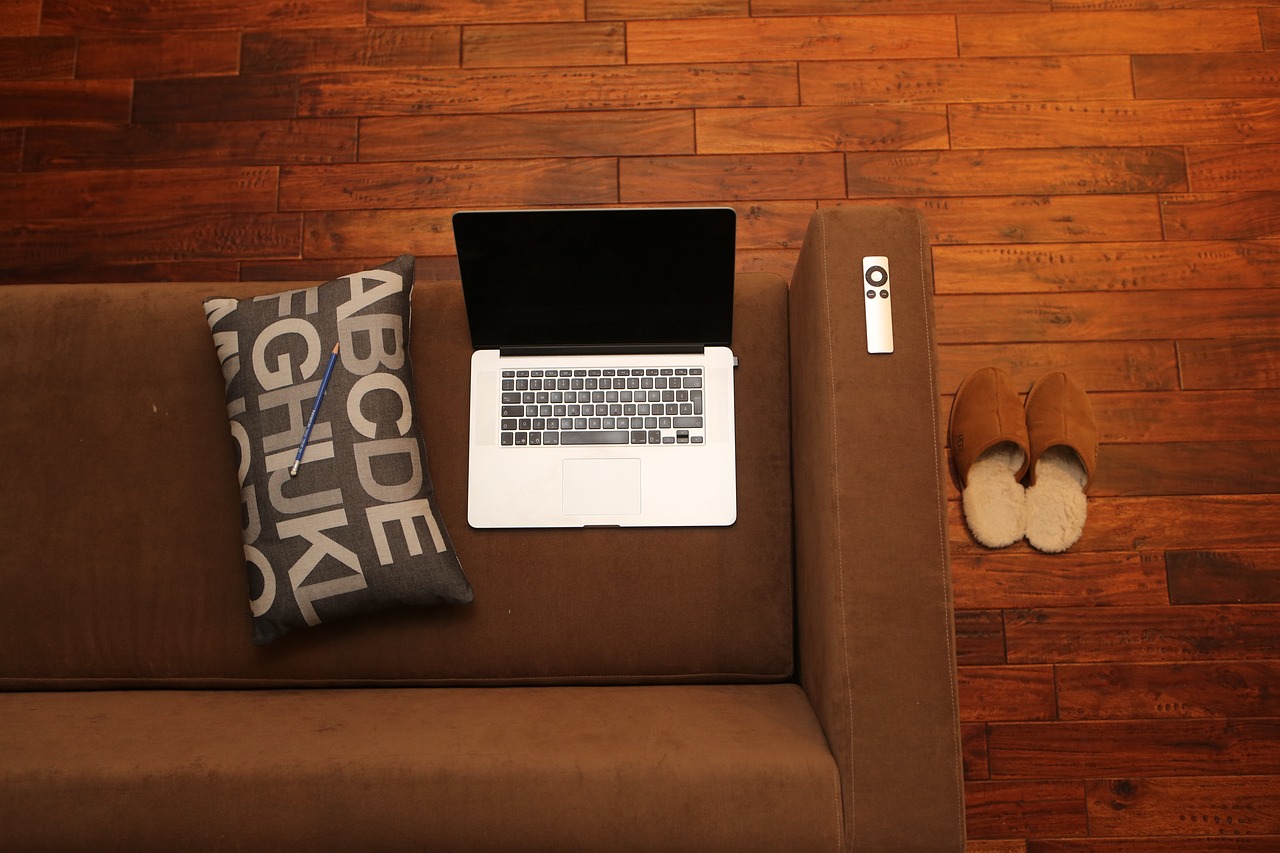
Home Security Cameras
When it comes to protecting your home, are like having a pair of extra eyes watching over your property 24/7. These devices not only serve as a deterrent to would-be intruders but also provide invaluable evidence in case of an incident. Imagine having the peace of mind that comes from knowing your home is under constant surveillance, whether you're at work, on vacation, or simply enjoying a night out. With a myriad of options available, choosing the right camera can feel overwhelming, but understanding the various types and their features can help simplify your decision.
There are several types of home security cameras, each designed to meet different needs. For instance, indoor cameras are perfect for monitoring the interior of your home, keeping an eye on pets or children while you're away. On the other hand, outdoor cameras are built to withstand the elements, providing robust protection against intruders. Additionally, many cameras now come equipped with night vision capabilities, ensuring that your property remains monitored even in low-light conditions. Let's take a closer look at the different types of cameras available:
| Type of Camera | Features | Best For |
|---|---|---|
| Indoor Cameras | Two-way audio, motion detection | Monitoring children or pets |
| Outdoor Cameras | Weatherproof, night vision | Deterring intruders |
| Doorbell Cameras | Video recording, two-way communication | Monitoring front entry |
| Wireless Cameras | Easy installation, remote access | Flexibility in placement |
One of the most significant advantages of modern security cameras is their connectivity. Many devices can be linked to your smartphone, allowing you to monitor your home in real-time from anywhere. This feature is especially beneficial for millennials who are often on the go. Imagine receiving an alert on your phone when someone approaches your front door, complete with a live video feed. You can even communicate with visitors through two-way audio, making it seem like you're home when you're not.
Another essential aspect to consider is the storage options available for your security footage. Some cameras offer cloud storage, which allows you to access your recordings from anywhere, while others may store footage locally on an SD card. It’s crucial to evaluate which option aligns best with your lifestyle and budget. After all, having access to recorded footage can be a game changer when it comes to ensuring your home’s safety.
In conclusion, investing in home security cameras is a smart move for any millennial looking to enhance their home security. With the right camera, you can enjoy the benefits of increased safety, peace of mind, and the convenience of modern technology. As you explore your options, remember to consider factors such as placement, connectivity, and storage to choose the best system for your needs.
- What is the best placement for home security cameras? Ideally, place cameras at entry points, such as doors and windows, as well as in areas with high foot traffic.
- Do I need a subscription for cloud storage? Many cameras offer optional subscription plans for cloud storage, but some allow local storage without a fee.
- Can I monitor my cameras remotely? Yes, most modern security cameras come with mobile apps that allow for remote monitoring.

Creating a Security Plan
Creating a robust security plan is not just a luxury; it’s a necessity in today’s world. With rising crime rates and the increasing sophistication of burglars, having a clear strategy can make all the difference. Think of your home as a fortress—every fortress needs a solid plan to defend against invaders. So, where do you start? The first step is to assess your unique situation and understand the specific risks your home might face. This means looking beyond just the door locks and considering your entire property.
Start by walking around your home and taking a close look at its vulnerabilities. Are there any dark corners or overgrown bushes that could provide cover for an intruder? Is your front door well-lit? These details matter. You might even want to jot down your observations. Creating a checklist can help you visualize the risks and prioritize what needs to be addressed. Here’s a simple checklist to consider:
- Check all entry points, including doors and windows.
- Assess outdoor lighting—are there dark areas?
- Consider the visibility of your home from the street.
- Evaluate your neighborhood—are there any recent crime reports?
Once you’ve identified potential weak spots, it’s time to establish your security measures. This could mean investing in better locks, installing security cameras, or even setting up a neighborhood watch. Remember, the goal is to create layers of security. Just like an onion, the more layers you have, the harder it becomes for someone to penetrate your defenses.
After implementing these measures, it’s crucial to establish clear emergency protocols. Think of this as your safety playbook. What should everyone in your household do in case of a break-in? Having a plan can be the difference between panic and a calm response. Make sure everyone knows how to contact emergency services and where to meet if evacuation is necessary. Regularly review and practice these protocols, so everyone feels prepared.
Lastly, don’t forget to involve all household members in the security planning process. Everyone should be aware of the security measures in place and their roles during an emergency. This not only builds a sense of community but also ensures that everyone knows how to react when it matters most. You could even hold a family meeting to discuss your security plan, making it a fun and engaging activity. After all, safety should be a shared responsibility.
In summary, creating a security plan involves assessing vulnerabilities, implementing security measures, establishing emergency protocols, and involving everyone in the household. By taking these steps, you can significantly enhance your home’s security and ensure that you and your loved ones feel safe and secure.
Q: How often should I review my security plan?
A: It’s a good idea to review your security plan at least once a year or whenever there are significant changes in your household or neighborhood.
Q: What are some affordable security measures I can implement?
A: Simple measures like installing motion-sensor lights, using deadbolts on doors, and trimming shrubs can be very effective without breaking the bank.
Q: Should I inform my neighbors about my security plan?
A: Yes! Sharing your security plan with trusted neighbors can help create a supportive network that looks out for one another.

Assessing Vulnerabilities
When it comes to securing your home, the first step is to understand your vulnerabilities. Every home has its unique set of weaknesses, and identifying these can be the difference between a secure environment and an easy target for intruders. Think of your home as a fortress; if you don’t know where the cracks are, how can you fortify them? Start by walking around your property and observing it from an outsider's perspective. What would you see as a potential entry point if you were a burglar?
One common vulnerability is poor lighting. Dark areas around your home can create perfect hiding spots for potential intruders. Ensure that all entry points, including doors and windows, are well-lit. Consider installing motion-sensor lights that activate when someone approaches. This not only deters intruders but also makes your home appear more welcoming to guests.
Another aspect to consider is the condition of your locks and doors. Are your locks outdated or damaged? If so, it might be time for an upgrade. Modern locks, especially smart locks, offer enhanced security features that traditional locks simply can’t match. Don't forget to check the doors themselves; a sturdy door frame can be just as important as the lock it holds. Here’s a quick checklist to help you assess your home’s vulnerabilities:
- Are there any broken or weak locks on doors and windows?
- Is your home well-lit at night, especially around entry points?
- Do you have any hidden areas where someone could hide?
- Are your windows easily accessible from the ground?
- Have you shared your home access codes or keys with too many people?
Next, consider the location of your home. Is it in a neighborhood known for higher crime rates? Understanding the crime statistics for your area can help you tailor your security measures accordingly. Websites like local police departments or neighborhood watch programs often provide valuable insights into recent criminal activities. If you feel your home is in a vulnerable area, investing in additional security measures, such as a security system or neighborhood watch, can be beneficial.
Lastly, don't forget about the importance of community. Engaging with your neighbors can create a support system that enhances security. They can help keep an eye on your property when you’re away, and you can do the same for them. Consider forming a neighborhood watch group where everyone looks out for each other. After all, there’s strength in numbers!
In summary, assessing vulnerabilities is about taking a proactive approach to home security. By identifying weaknesses, upgrading your locks, ensuring proper lighting, and fostering community relationships, you can significantly enhance your home's safety. Remember, a secure home is a happy home!
Q: How often should I assess my home’s security?
A: It's wise to perform a security assessment at least once a year or after any major changes to your home, such as renovations or new neighbors moving in.
Q: What are some quick fixes for improving home security?
A: Simple upgrades like installing motion-sensor lights, reinforcing door frames, and ensuring all locks are functioning properly can make a significant difference.
Q: Should I invest in a home security system?
A: If you live in an area with higher crime rates or if you travel frequently, investing in a home security system can provide peace of mind and added protection.
Q: How can I involve my neighbors in home security?
A: Organize a neighborhood watch program, share contact information, and agree to look out for each other's properties.
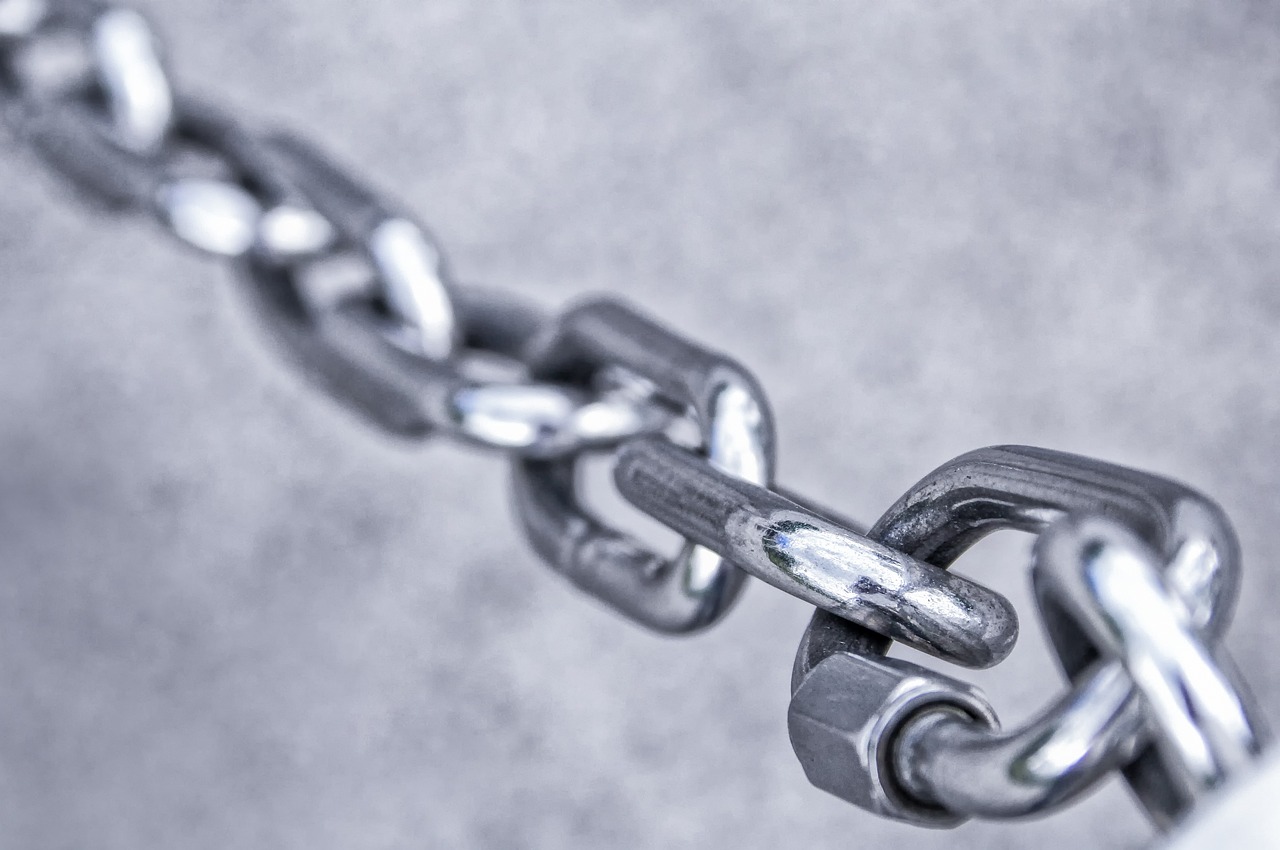
Establishing Emergency Protocols
When it comes to home security, having a solid plan in place can be the difference between chaos and calm during an emergency. Establishing emergency protocols is not just about having a plan; it's about ensuring that everyone in your home knows what to do when the unexpected happens. Imagine being in a situation where every second counts, and instead of panicking, you and your loved ones spring into action because you've prepared together. Sounds reassuring, right?
The first step in creating effective emergency protocols is to identify potential scenarios that could occur in your home. These may include natural disasters like earthquakes or floods, break-ins, or even medical emergencies. Each situation requires a tailored response, but there are some common elements that should be part of your protocols. For instance, having a designated meeting point outside your home can help ensure everyone is accounted for in case of an evacuation. Additionally, consider creating a list of important contacts, including local emergency services, family members, and trusted neighbors.
Once you've identified the possible emergencies, it's crucial to communicate these protocols with everyone in your household. This is where regular family meetings come into play. Gather your household members and walk them through the protocols you've established. Use this time to discuss the importance of each step and why it's essential to stay calm and collected. You might even consider organizing a practice drill for scenarios like fire evacuations or lockdowns, which can help reinforce the procedures. It's one thing to talk about what to do; it's another to actually practice it, making it second nature when the time comes.
Moreover, it's vital to equip your home with the necessary tools and resources that align with your emergency protocols. For instance, having a well-stocked emergency kit can make a world of difference. This kit should include essentials like first aid supplies, non-perishable food, water, flashlights, and batteries. You might even want to include a portable phone charger, as staying connected during an emergency is crucial. Here’s a simple table of items you might want to include in your emergency kit:
| Item | Purpose |
|---|---|
| First Aid Kit | To treat minor injuries |
| Non-Perishable Food | To sustain energy |
| Water | To stay hydrated |
| Flashlight | To provide light in dark situations |
| Portable Phone Charger | To keep communication open |
Lastly, it’s important to regularly review and update your emergency protocols. Life is constantly changing, and so are the dynamics of your household. New family members, changes in schedules, or even moving to a different home can all impact your emergency plan. Set a reminder to revisit your protocols at least once a year or after any significant life changes. This way, you can ensure that everyone is still on the same page and that your plan remains effective.
In conclusion, establishing emergency protocols is not just a task to check off your list; it’s a vital component of home security that can provide peace of mind. By preparing together, practicing regularly, and keeping your emergency kit stocked, you create an environment where safety is prioritized, and everyone knows their role in a crisis. So, gather your household, start the conversation, and take those crucial steps toward a safer home.
Frequently Asked Questions
- What are the most common security challenges for millennials?
Millennials often face unique security challenges, such as living in urban areas with higher crime rates, frequent moves, and reliance on rental properties. Their lifestyle choices, like traveling frequently or using shared spaces, can also expose them to potential vulnerabilities.
- How can smart home technology improve my home's security?
Smart home technology enhances security by integrating devices like smart locks, cameras, and alarms that can be controlled remotely. This allows homeowners to monitor their property in real-time, receive alerts about suspicious activity, and manage access even when they are away.
- Are smart locks really safe?
Yes, smart locks are designed with advanced security features that often surpass traditional locks. They utilize encryption and can offer additional functionalities, such as temporary access codes for guests, making them a secure option for busy lifestyles.
- What types of home security cameras should I consider?
When choosing home security cameras, consider options like indoor/outdoor cameras, doorbell cameras, and wireless models. Look for features such as night vision, motion detection, and remote access to ensure you have a comprehensive monitoring system.
- How do I create a security plan for my home?
Start by assessing your home's vulnerabilities, such as weak locks or poorly lit areas. Then, establish emergency protocols for various scenarios, ensuring all household members are informed. Regularly review and update your security measures to keep up with any changes in your living situation.
- What should I include in my emergency protocols?
Your emergency protocols should outline steps to take during different situations, such as break-ins, fires, or natural disasters. Include contact information for local authorities, escape routes, and a communication plan for family members to ensure everyone knows what to do in an emergency.



















